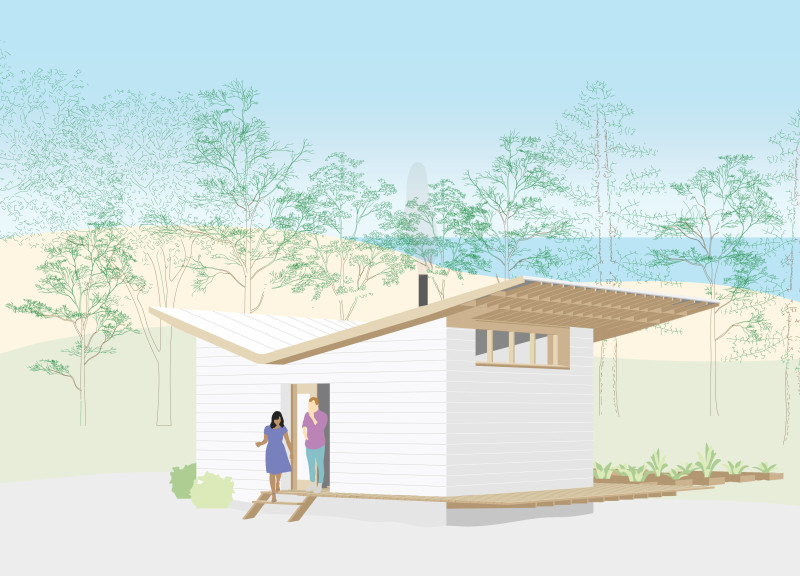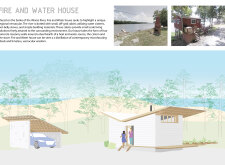5 key facts about this project
The Fire and Water House is located along the Illinois River and focuses on sustainable living. The design reflects a modern interpretation of traditional regional architecture. By drawing inspiration from local off-grid cabins, the house emphasizes functionality and a close connection to its natural surroundings. It showcases a thoughtful approach to living that prioritizes efficiency and comfort.
Design Concept
The house is enclosed by four concrete masonry walls, forming a strong and protective structure. At the heart of the home is a dual hearth system that combines heating and water functions. This setup not only meets the basic needs of the occupants but also highlights an effective use of resources. The arrangement of spaces encourages a practical living experience in harmony with the river environment.
Materials and Construction
The materials chosen for the Fire and Water House focus on durability and effectiveness. Concrete masonry provides solid construction that withstands the elements while acting as a thermal mass to help moderate indoor temperatures. A water cistern for rainwater collection supports the home's self-sufficiency. A pot-belly stove adds warmth and serves as a nod to the traditional craftsmanship of the region, linking the design to its cultural roots.
Spatial Relationships
The layout promotes a balance between private and communal areas. Spaces are designed to function for daily life while encouraging interactions with the outdoors. Large openings allow natural light in and facilitate connection to the river and its landscape. This careful consideration enhances the overall atmosphere of the home, making it feel more inviting and integrated with nature.
The inclusion of a produce garden underscores the home's focus on sustainability. It provides residents with the chance to grow their own food, further deepening their relationship with the land. The design reflects a practical and thoughtful response to living, defining a residence that is well-adapted to its setting and encourages a lifestyle that is both efficient and connected to nature.





















































